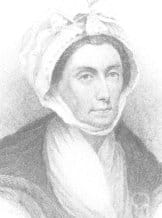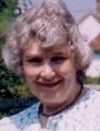Called the ‘Queen of the Methodists’ by so cynical a writer as Horace Walpole, the Countess played a strategic part in the great eighteenth-century revival of religion which so profoundly affected Great Britain, America and countries such as Holland, Germany and Bohemia.
Her life spanned the greater part of the century, and her influence touched virtually all the great men of the revival: George Whitefield, the Wesley brothers, Philip Doddridge, William Grimshaw, William Romaine, John Fletcher, Henry Venn, Howell Harris, Daniel Rowland, William Williams and many others.
Sword of State
Born in Northamptonshire in 1707, into a family that could trace its ancestry back to royalty, Selina was the second of Washington Shirley’s three daughters. But her childhood was far from happy and her home a place of bitterness and acrimony.
When Selina was only six her parents split up. Her mother moved to France taking her youngest daughter with her. Family wrangling over property further marred her childhood, and not until she married Theophilus Hastings, Earl of Huntingdon, when she was twenty-one years of age did she know any settled home life.
Although the Shirley family was both prosperous and influential, the Hastings family was more so. Selina and Theophilus regularly mingled with royalty and Theophilus carried the Sword of State at the coronation of George II.
Forceful
With a natural flair for organisation, Selina managed her husband’s estates, which included property in Yorkshire, Leicestershire and Northamptonshire. Four sons and two daughters were born in quick succession.
Childbirth carried high risks, and Selina suffered from constant ill-health. But the remedies of purges and vomitings that her thirty-two-stone doctor proposed did little to improve either her condition or her spirits.
Quick-tempered and forceful by disposition, Selina was also sensitive and conscientious, and did all in her power to improve the lot of those who farmed the Hastings lands or worked at her Leicestershire home, Donington Hall.
The young Countess possessed all that money could buy, but she was a dissatisfied woman. Religious and generous though she was, her mind was restless and troubled.
Her hasty temper often got the better of her: ‘I would undergo everything to come to a true knowledge of my Saviour’, she confessed to her sister-in-law, Lady Betty Hastings. So despairing did she become that friends of Theophilus advised him to have her put into a mental asylum — a thing he would never do.
New dimension
But when her other sisters-in-law, Margaret, Anne and Frances Hastings were deeply influenced by the preaching of the Yorkshire evangelist, Benjamin Ingham a friend of John Wesley, Selina too was profoundly affected.
‘Since I have known the Lord Jesus Christ for salvation, I have been as happy as an angel’, announced Margaret Hastings artlessly. This was a dimension of religion entirely new to the Countess of Huntingdon.
All her life Selina had feared death but in July 1739 its reality came very close as she faced a period of serious illness. She would have thought of her husband and her young family, but mostly she thought of her spiritual condition.
Then Margaret’s words flashed vividly before her mind again: ‘Since I have known the Lord Jesus Christ for salvation I have been as happy as an angel’. From her bed Selina lifted up her heart to the Saviour with the earnest prayer that she too might know the inner happiness through Christ that her sister-in-law had found.
Guilt removed
God heard her cry and immediately all her distress and fears were removed. At peace spiritually, Selina’s physical condition began to improve. As soon as she was able she wrote to share with her sisters-in-law the joy she now experienced in the knowledge that her guilt was removed and sins forgiven.
The change was immediate and obvious. Even her maid noted that her mistress had not fallen into a rage for many months.
Never half-hearted in anything she did, Selina began to align herself with such despised Methodists as Benjamin Ingham, knowing that this would set every tongue in court a-wagging. To her friends this was social suicide and some of them begged Theophilus to see if he could moderate his wife’s religious enthusiasm.
Sending for his old Oxford tutor and friend, Martin Benson, now Bishop of Gloucester, Theophilus arranged for a discussion to take place between Benson and Selina. Much of the conversation centred round the rights and wrongs of the new field preachers, men such as the Wesley brothers, Ingham and especially George Whitefield whom Benson himself had just ordained in 1739.
Out-manoeuvred
Quite clearly Benson found himself out-manoeuvred by the young woman. ‘She plainly and faithfully urged upon him the awful responsibility of his station under that great head of the Church, Jesus Christ’, we read.
This was more than the bishop could stand. Jumping up, he hurried to make his departure. But before he left he said with a measure of chagrin that he regretted the day he had ever ordained George Whitefield, for he recognised that the change in the Countess was directly due to the new preaching associated with the young preacher’s name.
But Selina had the last word. ‘My Lord’, she said, ‘mark my words, when you come upon your dying bed, that will be one of the few ordinations you will reflect upon with complacence’ — a prediction that came true.
Sadness
Selina’s family life was tinged with sadness. Two of her sons, Ferdinando and George, aged eleven and thirteen, died of smallpox within an eight-month period. But the grief that nearly broke Selina’s spirit was the loss of her husband Theophilus in 1746.
Their love had been strong and deep. He died of a stroke, unexpectedly and alone, in his home in Downing Street, leaving Selina a widow at only thirty-nine. As she grieved near his grave in Ashby-de-la-Zouch, she might be excused for thinking that all purpose in her life had gone for ever. In fact it had only begun.
During the early years of her Christian experience, the Countess relied heavily on the help she received from Charles and John Wesley. In return she encouraged them in every way, doing all in her power to promote their labours.
But after the death of Theophilus, her friendship with Howell Harris and Philip Doddridge, coupled with her need for a strong assurance of faith, gradually led her ever closer to the doctrines held by the Calvinistic Methodists.
When George Whitefield, who had spent the last four years in America, arrived home in July 1748, Selina asked him to call on her as soon as he could.
Personal chaplain
Now spending part of her time in her fashionable home in the one-time village of Chelsea, on the banks of the Thames, Selina planned to invite members of the aristocracy, members of parliament and even royalty itself to her drawing room, to hear the preaching of Whitefield or occasionally of Wesley and others.
To accomplish this purpose she appointed Whitefield as her personal chaplain — a privilege she enjoyed as a peeress of the realm. Many of the nobility accepted her invitations — few could resist her charm and strength of personality — and came under the searching and powerful preaching of Whitefield.
Her aunt, the lovely Lady Fanny Shirley, mistress of Lord Chesterfield; Chesterfield himself and his long-suffering wife; the atheistic Lord Bolingbroke and his half brother Lord St John; and numerous others reckoned among the celebrities of the day; all these could be found at Selina’s drawing-room meetings.
Acceptance
As the Countess requested in her will that no biography should be written of her, none was attempted until almost ninety years after these events had taken place. As a result, many of those converted or influenced by these gatherings of the nobility were forgotten with the passage of time.
Among the most significant, however, were Lady Fanny Shirley, Lord St John and Lord Dartmouth, later to become Colonial Secretary, President of the Board of Trade and President of the Royal Society.
Even the Prince of Wales who died in 1752 was much affected. By her patronage the Countess nursed and protected the fledgling Methodist movement, and gained for the Christian gospel a degree of acceptance in high places, where only apathy and antagonism had existed before.
Luke Tyerman, one of Whitefield’s earliest biographers, sums up this period in the Countess’s life and evaluates its effect in these words: ‘The gatherings in Chelsea were profoundly interesting spectacles; and never till the Day of Judgement will it be ascertained to what extent the preaching of the youthful Whitefield affected the policy of some of England’s greatest statesmen and moulded the character of some of England’s highest aristocratic families’.
With an unquenchable zeal for the conversion of the men and women of her generation, Selina, now in her early forties, stood poised for a life of extraordinary usefulness in the kingdom of God.







